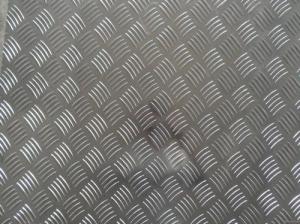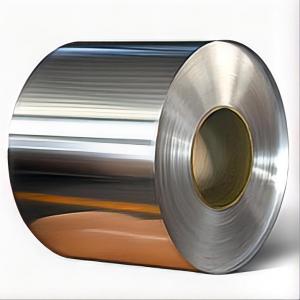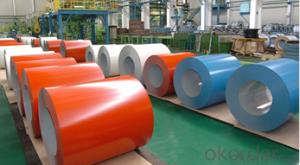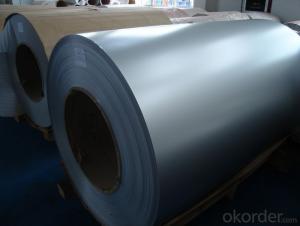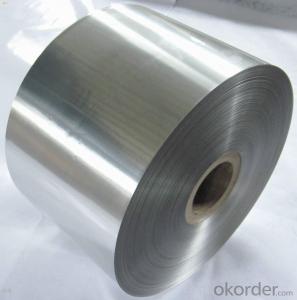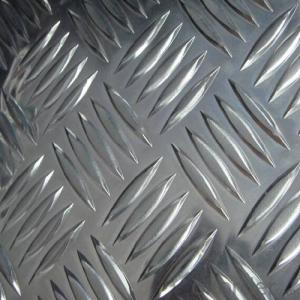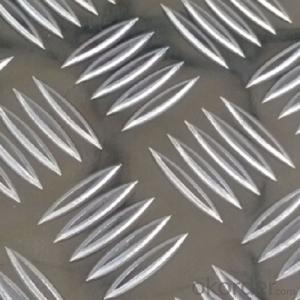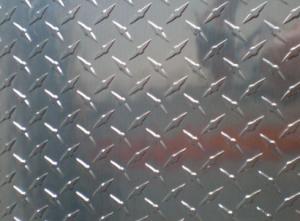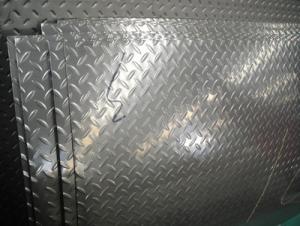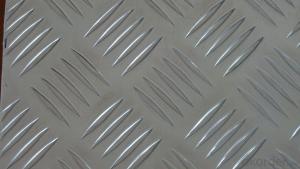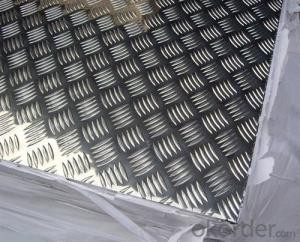China Aluminum Coil Slitter Quotes for Anti-Slipping & Stair Steps Aluminium Checker Plate Five Bar/Aluminum Tread Plate
- Loading Port:
- Shanghai
- Payment Terms:
- TT or LC
- Min Order Qty:
- 5 m.t.
- Supply Capability:
- 9000 m.t./month
OKorder Service Pledge
Quality Product, Order Online Tracking, Timely Delivery
OKorder Financial Service
Credit Rating, Credit Services, Credit Purchasing
You Might Also Like
1.Product description:
Aluminium Alloy | Thickness | Width | Length | Temper |
| (mm) | (mm) | (mm) or coils | ||
| A1050,A1060,A1070,A1100,A1200 | 1.0-10.0 | 100~2000 | 100~8000 | O,H12,H14,H16,H18,H22,H24,H26,etc |
| A3003,A3105,A3004 | 1.0-10.0 | 100~2000 | 100-8000 | O,H12,H14,H16,H18,H22,H24,H26,etc |
| A5052 ,A5005,A5083,A5754 | 1.0-10.0 | 100~2000 | 100-8000 | O,H18,H14,H32,H34,H111,H112 ,etc |
| A8011 | 1.0-10.0 | 100~2000 | 100-8000 | O,H12,H14,H16,H18,H22,H24,H26,etc |
| Packing : Export seaworthy wooden pallet ,and each pallet about 2 tons | ||||
| Standards:ASTM-B209. EN573-1 | ||||
| Quality of material: free from defects like oil stain , roll marks, waves ,dents, scratches etc,A+ quality | ||||
| Application :anti-slipping ,decoration ,Floor ,Stair Steps ,etc | ||||
| MOQ | 2 tons | |||
| Payment term: | T/T,L/C | |||
| Delivery Time | within 25 days after receipt the deposit or lc | |||
| Kind attention : Specifications can be produced as the client requirements. | ||||
| Bar pattern :one bar ,two bar ,three bar ,five bar ,diamond etc | ||||
| Finish ; normal mill finsh ,bright finish . | ||||
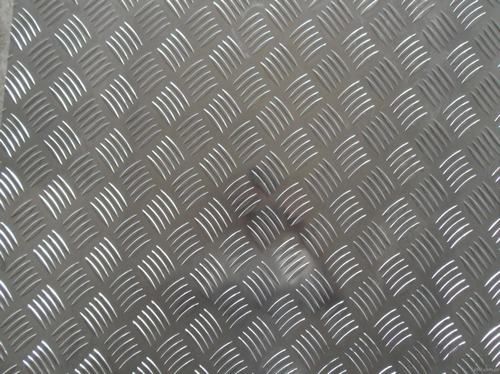
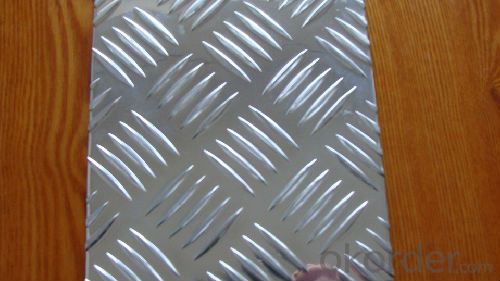
2.Chemical Composition :
Alloy | Si | Fe | Cu | Mn | Mg | Cr | Zn | Ti | Other | Al | ||
| Single | Total | |||||||||||
| 1050 | 0.25 | 0.4 | 0.05 | 0.05 | 0.05 | _ | 0.05 | V:0.05 | 0.03 | 0.03 | _ | 99.5 |
| 1060 | 0.25 | 0.35 | 0.05 | 0.03 | 0.03 | _ | 0.05 | V:0.05 | 0.03 | 0.03 | _ | 99.6 |
| 1070 | 0.2 | 0.25 | 0.04 | 0.03 | 0.03 | 0.04 | V:0.05 | 0.03 | 0.03 | 99.7 | ||
| 1100 | Si+Fe:0.95 | 0.05~0.40 | 0.05 | _ | _ | 0.1 | _ | _ | 0.05 | 0.15 | 99 | |
| 1200 | Si+Fe:1.00 | 0.05 | 0.05 | _ | 0.1 | _ | 0.05 | 0.05 | 0.15 | 99 | ||
| 3003 | 0.6 | 0.7 | 0.05~0.20 | 1.0~1.5 | _ | _ | 0.1 | _ | _ | 0.05 | 0.15 | Remainder |
| 3004 | 0.3 | 0.7 | 0.25 | 1.0~1.5 | 0.8~1.3 | _ | 0.25 | _ | _ | 0.05 | 0.15 | Remainder |
| 3005 | 0.6 | 0.7 | 0.3 | 1.0~1.5 | 0.20~0.6 | 0.1 | 0.25 | _ | 0.1 | 0.05 | 0.15 | Remainder |
| 3105 | 0.6 | 0.7 | 0.3 | 0.30~0.8 | 0.20~0.8 | 0.2 | 0.4 | _ | 0.1 | 0.05 | 0.15 | Remainder |
| 5005 | 0.3 | 0.7 | 0.2 | 0.2 | 0.50~1.1 | 0.1 | 0.25 | _ | _ | 0.05 | 0.15 | Remainder |
| 5052 | 0.25 | 0.4 | 0.1 | 0.1 | 2.2~2.8 | 0.15~0.35 | 0.1 | _ | _ | 0.05 | 0.15 | Remainder |
| 5083 | 0.4 | 0.4 | 0.1 | 0.40~1.0 | 4.0~4.9 | 0.05~0.25 | 0.25 | _ | 0.15 | 0.05 | 0.15 | Remainder |
| 5086 | 0.4 | 0.5 | 0.1 | 0.20~0.7 | 3.5~4.5 | 0.05~0.25 | 0.25 | _ | 0.15 | 0.05 | 0.15 | Remainder |
| 6061 | 0.4~0.8 | 0.7 | 0.15~0.40 | 0.15 | 0.80~1.20 | 0.04~0.35 | 0.25 | _ | 0.15 | 0.05 | 0.15 | Remainder |
| 6063 | 0.2~0.6 | 0.35 | 0.1 | 0.1 | 0.45~0.90 | 0.1 | 0.1 | _ | 0.1 | 0.05 | 0.15 | Remainder |
| 6082 | 0.7~1.3 | 0.5 | 0.1 | 0.4~1.0 | 0.6~1.2 | 0.25 | 0.2 | _ | 0.1 | 0.05 | 0.15 | Remainder |
| 8011 | 0.5~0.9 | 0.6~1.0 | 0.1 | 0.2 | 0.05 | 0.05 | 0.1 | _ | 0.08 | 0.05 | 0.15 | Remainder |
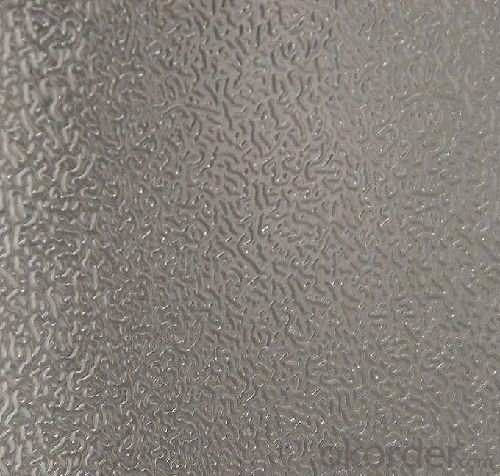
- Q: also, can aluminum become oxidized when secured down with metal nuts and bolts vice stainless steel nuts and bolts?
- The oxidation is the white powdery stuff on the metal. It can be cleaned with aluminum cleaner. Exposure to the weather can cause the rust, electric current. I advise using a sealer on the metal to keep it clean.
- Q: What are the different forming processes for aluminum coils?
- There are several different forming processes that are commonly used for aluminum coils. These processes include: 1. Hot rolling: This is the most common method used to form aluminum coils. It involves heating the aluminum to a high temperature and then rolling it between two large rolls to reduce its thickness. This process allows for precise control of the thickness and shape of the coil. 2. Cold rolling: This process is similar to hot rolling, but the aluminum is cooled to room temperature before it is rolled. Cold rolling is often used to produce coils with a smoother surface finish and tighter tolerances. 3. Continuous casting: In this process, molten aluminum is poured into a continuous casting machine, which produces a continuous strip of aluminum. The strip is then cooled and coiled to form aluminum coils. Continuous casting is often used for large-scale production of aluminum coils. 4. Extrusion: This process involves pushing aluminum through a die to create a specific shape or profile. The extruded aluminum is then cooled and coiled to form aluminum coils. Extrusion is commonly used to produce coils with complex shapes or profiles. 5. Slitting: Slitting is a process used to cut aluminum coils into narrower strips. It involves passing the coil through a set of rotating blades that cut the coil into multiple smaller strips. Slitting is often used to produce coils with specific widths or for further processing. These are just a few of the different forming processes that can be used to produce aluminum coils. The choice of process depends on factors such as the desired shape, thickness, and surface finish of the coil, as well as the production volume and cost considerations.
- Q: How are aluminum coils used in the production of architectural panels?
- Aluminum coils play a crucial role in the production of architectural panels by serving as the primary material for their construction. These coils are typically made from high-quality aluminum alloy, which possesses several desirable characteristics such as lightweight, corrosion resistance, and malleability. The first step in using aluminum coils for architectural panels involves uncoiling the raw material. The coils are unwound and flattened to create flat sheets of aluminum. These sheets are then cut to the desired size and shape, depending on the specific architectural panel design requirements. Once the aluminum sheets are prepared, various manufacturing techniques can be used to further process them. These techniques include bending, folding, welding, and punching to achieve the desired panel shape and functionality. The malleability of aluminum allows for precise shaping and customization, making it an ideal material for architectural panel production. Additionally, aluminum coils can be coated or treated to enhance their appearance, durability, and performance. Coatings such as paint, powder coating, and anodizing can be applied to the aluminum surface to provide protection against weathering, UV radiation, and corrosion. These coatings can also offer aesthetic options, allowing architects and designers to choose from a wide range of colors and finishes for their architectural panels. Architectural panels manufactured using aluminum coils offer numerous benefits. Firstly, due to the lightweight nature of aluminum, these panels are easier to handle and install, reducing labor costs and time. Additionally, aluminum's corrosion resistance ensures that architectural panels remain durable and visually appealing even in harsh weather conditions. The malleability of aluminum also allows for intricate designs and complex shapes, enabling architects to create visually striking and unique building facades. In conclusion, aluminum coils are an essential component in the production of architectural panels. Their lightweight, corrosion resistance, and malleability properties make them an ideal material for creating durable and aesthetically pleasing panels. Whether it is for high-rise buildings, residential homes, or commercial structures, aluminum coils are instrumental in the production of architectural panels that enhance the visual appeal and functionality of modern architecture.
- Q: I was told today that taking aluminium inside your body greatly increases the chance of getting alzheimers as they destroy cells. Is this true?If so, then what foods contain aluminium?Thanks in advance :)
- It has been hypothesized that aluminium exposure is a risk factor for the development or acceleration of onset of Alzheimer disease (AD) in humans. The Aluminium could be found in bottled or treated tap drinking water and food additives. Aluminium is permitted as a food additive and is used in colourings, emulsifiers, stabilisers and anti-caking agents. Example of food containing aluminium additives includes processed cheese.
- Q: Can aluminum coils be utilized as materials for constructing roofs?
- <p>Yes, aluminum coils can be used for roofing materials. They are known for their durability, corrosion resistance, and lightweight properties, making them an excellent choice for roofing. Aluminum's reflective surface also helps in energy efficiency by reflecting sunlight and reducing heat absorption. It's recyclable and has a long lifespan, which contributes to its sustainability. However, it's important to ensure that the aluminum coils are of the appropriate gauge and quality for the specific roofing application to guarantee structural integrity and performance.</p>
- Q: I think the use of aluminum, at the lower levels, has really hurt US born players. To give a kid a piece of metal, and expect him to use wood when drafted........ I think US should go back to wood, whatever the costs (I know the aluminum is far cheaper). Thoughts....Cheers.
- i kinda agree, im a little in the middle. when your younger you want a kid to have fun and a great time white playing, because a kid cant hit a ball as far with a piece of wood than he would with an aluminum bat.. know what im saying?
- Q: Are aluminum coils suitable for construction applications?
- Indeed, construction applications can make good use of aluminum coils. Aluminum, a material known for its lightweight and durability, is extensively utilized in the construction sector. Aluminum coils find frequent application in roofing, siding, gutters, and other exterior uses owing to their resistance against corrosion and ability to withstand inclement weather conditions. Furthermore, their simple installation and maintenance procedures make them highly favored by contractors. Moreover, aluminum coils can be painted or coated to enhance their visual appeal and blend with the overall architectural design of a structure. Ultimately, aluminum coils offer a dependable and economical option for construction purposes.
- Q: What are the common maintenance practices for aluminum coils?
- Some common maintenance practices for aluminum coils include regular cleaning, inspection for damage or corrosion, and ensuring proper airflow around the coils. Cleaning the coils is important to remove dirt, debris, and other contaminants that can accumulate over time. This can be done by gently brushing or vacuuming the coils, or using a mild detergent and water solution to clean more stubborn dirt. It is important to avoid using harsh chemicals or abrasive materials, as they can damage the aluminum surface. Inspecting the coils for damage or corrosion is also essential for maintaining their performance and longevity. Any signs of physical damage, such as dents or bends, should be addressed promptly to prevent further deterioration. Additionally, corrosion can occur due to exposure to moisture or chemicals, so it is important to check for any signs of rust or discoloration. If corrosion is present, it should be treated and the cause of the corrosion should be addressed to prevent future damage. Proper airflow around the coils is crucial for efficient operation. Obstructions or blockages in the surrounding area should be cleared to ensure adequate air circulation. This can include removing any debris or objects that may be restricting airflow, as well as ensuring proper spacing between the coils and nearby objects. Additionally, regular inspection of the air filters and ventilation system is important to prevent any restrictions that could impact airflow. Overall, regular cleaning, inspection, and maintenance of aluminum coils can help ensure their optimal performance and prolong their lifespan. It is recommended to follow manufacturer guidelines and consult with professionals if any issues or concerns arise.
- Q: What are the typical production volumes for aluminum coil manufacturers?
- The typical production volumes for aluminum coil manufacturers vary depending on the size and capabilities of the specific manufacturer. However, it is common for aluminum coil manufacturers to produce thousands to tens of thousands of tons of aluminum coils annually, catering to the demands of diverse industries such as construction, automotive, and packaging.
- Q: i am thnking of building my own aluminum john boat and using the propulsion from a jetski to power it, i was wondering if anyone had taken on a project like this and had a few pieces of advice to offer while i am still in the planning stages. the biggest concern i have right now involves the tunnel for the intake, should i use the original fiberglass from the jetski or build up a tunnel out of aluminum for it?
- 518 okorder /
Send your message to us
China Aluminum Coil Slitter Quotes for Anti-Slipping & Stair Steps Aluminium Checker Plate Five Bar/Aluminum Tread Plate
- Loading Port:
- Shanghai
- Payment Terms:
- TT or LC
- Min Order Qty:
- 5 m.t.
- Supply Capability:
- 9000 m.t./month
OKorder Service Pledge
Quality Product, Order Online Tracking, Timely Delivery
OKorder Financial Service
Credit Rating, Credit Services, Credit Purchasing
Similar products
Hot products
Hot Searches
Related keywords
